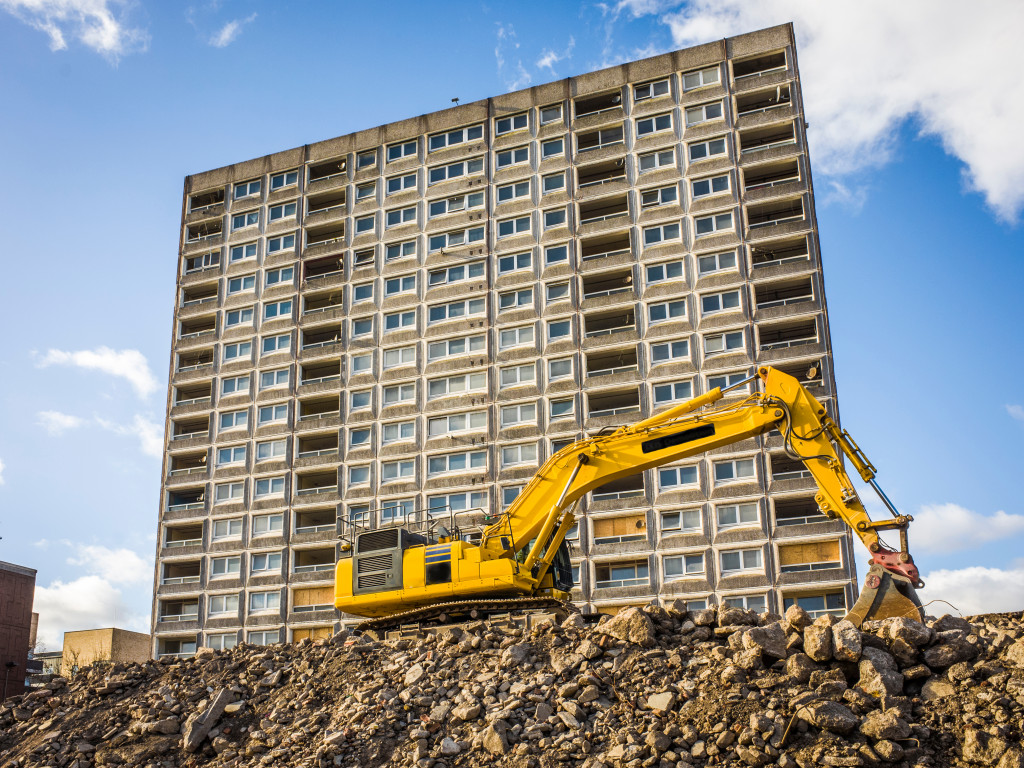- Comprehensive training programs, including equipment usage, emergency procedures, PPE, and hazard identification, are vital for enhancing construction site safety.
- Implementing a robust safety policy that includes regular maintenance and promoting using Personal Protective Equipment (PPE) can foster a safer work environment.
- Encouraging open communication about safety concerns and holding regular safety meetings promotes proactive hazard identification and reinforces a culture of safety.
- Planning and organizing worksites, including clear path designation, strategic machinery placement, and regular housekeeping, can reduce accidents and streamline operations.
As a construction business owner, ensuring safety at your worksites is a prime responsibility. Preventing accidents protects your team and enhances productivity, morale, and your company’s reputation. Delve into strategies that can help you build a safer and more secure construction environment.
Invest in Training
Investing in comprehensive training programs is an effective way to enhance workplace safety. These programs should cover equipment usage, emergency procedures, personal protective equipment (PPE), and hazard identification. Specialized training for certain dangerous tasks, like working at heights or handling hazardous materials, should also be included.
Regular refresher courses ensure standards are maintained and new team members are educated. It’s also worth considering training for mental health awareness, as stress and fatigue can significantly impact safety on construction sites. Ultimately, thorough training can reduce the risk of accidents, improve team confidence, and instill a safety culture within your organization.
Implement a Safety Policy
Creating and implementing a robust safety policy is another fundamental element in establishing a secure construction environment. Here are some tips:
Maintain Equipment
Regular equipment maintenance is critical in promoting safety on construction sites. Well-maintained tools and machinery operate as intended, reducing the risk of malfunctions that can lead to accidents. A routine maintenance schedule should be established and strictly adhered to, ensuring all equipment is inspected and serviced regularly.
This extends the life of your tools and fosters a safe work environment. Additionally, keep an accurate record of all maintenance activities as a part of your safety policy. This will ensure transparency and demonstrate your company’s commitment to safety. Moreover, training your employees to identify signs of machinery wear and tear can also contribute to maintaining a safe and efficient construction site.
Promote Personal Protective Equipment (PPE)
Ensuring safety on construction sites is of utmost importance, and one crucial aspect is promoting the use of Personal Protective Equipment (PPE). PPE, including safety helmets, gloves, eye protection, high-visibility clothing, and safety footwear, is specifically designed to shield workers from potential hazards in the workplace.
By prioritizing the implementation of PPE, we can significantly enhance the well-being and protection of all individuals involved. It’s important to ensure every worker is provided with appropriate PPE and trained on its correct usage. This includes understanding when and why they should use PPE, how to wear it correctly, and how to spot and report any damage.
Moreover, creating a culture where PPE is normalized and encouraged can significantly decrease the chances of injuries. Remember that PPE is the last defense against workplace hazards, so it should be used with other safety measures, not as a substitute. Remember, a safe workforce is a productive one.
Utilize Fall Protection Equipment
Fall protection equipment is an essential component in securing the safety of your workforce, especially on construction sites where risks of falls from heights are prevalent. Harnesses, safety nets, guardrails, and other fall arrest systems can drastically decrease the likelihood of severe injuries or fatalities resulting from falls.
It’s integral that workers are effectively trained on how to use this equipment properly and understand the vital role it plays in ensuring their safety. Fall protection systems should be regularly inspected and maintained to guarantee their effectiveness. Additionally, rescue plans should be prepared and communicated effectively; these plans outline the steps to take in the event of a fall.
It’s important to remember that each worksite is unique, so fall protection requirements may vary; therefore, a thorough hazard assessment should be conducted to identify specific fall risks and tailor the protection measures accordingly. This proactive approach to fall safety will undoubtedly contribute to a safer construction environment.
Encourage Open Communication
Encouraging open communication on safety matters is vital in a construction setting. Creating an environment where team members feel comfortable reporting safety concerns, near misses, or suggesting improvements leads to proactive hazard identification and mitigation. Regular safety meetings should be held where workers can share their insights and discuss potential risks.
This platform bolsters safety and fosters a sense of teamwork and shared responsibility. Management should promptly respond to these concerns, reinforcing that everyone’s input is valued and safety is a top priority.
Additionally, installing visible safety signage across the site can remind workers to adhere to safety protocols. Thus, fostering a culture of open communication around safety can significantly enhance the overall safety protocol and create a more secure construction environment.
Plan and Organize Work Sites
Planning and organizing worksites is a pivotal component of construction safety. A well-organized site allows for smooth operations, reducing the risk of accidents caused by disarray. Start by ensuring clear and easily accessible paths for foot and vehicular traffic. This includes designating storage areas for materials and equipment to avoid clutter.
Incorporating safety into your layout planning, such as placing heavy machinery away from high-footfall areas, can also mitigate risks. Regular housekeeping, like removing waste and debris, prevents tripping hazards and maintains site orderliness.
Planning also extends to the scheduling of tasks: avoid overlapping high-risk activities where possible to minimize simultaneous hazards. Remember, a well-organized worksite ensures safety and increases efficiency and productivity.
In conclusion, prioritizing safety in your construction business is both responsible and beneficial. Implement these strategies to create a secure, efficient, and productive environment. Remember, your actions set the tone for workplace culture. Start enhancing your site’s safety today.


